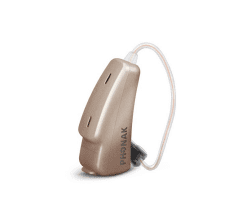Researchers from the Department of Otolaryngology at the University of Pittsburgh Schools of the Health Sciences and University of Pittsburgh Medical Center (UPMC) presented findings on balance recently at the mid-winter meeting of the Association for Research in Otolaryngology (ARO).
Below are highlights on two studies, which were funded by the National Institute on Deafness and Other Communication Disorders (NIDCD), one of the National Institutes of Health. More information on ARO’s meeting is available on the Web site.
Virtual reality treatment appears to help people with balance disorders: Maneuvering through grocery store aisles without feeling anxious or dizzy can sometimes be impossible for the millions of Americans who have balance problems. Early and ongoing research suggests that "walking" through a virtual reality grocery store can benefit people with balance disorders.
The world’s only such store, based in the Department of Otolaryngology at Pitt and UPMC, is like a life-size video game that projects 3-D, moving images of a grocery store onto three screens that surround a real shopping cart on a custom-built treadmill. A person operating the shopping cart can control his or her own speed and direction of travel while walking up and down aisles that display realistic-looking products. The store has 18 aisles, each with an increasing level of difficulty. Easier aisles display larger products, such paper towels, while the more challenging aisles contain smaller products, such as canned goods or tiny medicine bottles.
Led by Sue Whitney, PhD, a physical therapist at Pitt’s School of Health and Rehabilitation Sciences and a researcher at the Medical Virtual Reality Center, the study followed 11 patients with balance disorders who participated in the virtual reality grocery store trial at increasing difficulty levels for six weekly sessions. Patients went through a series of balance and mobility tests and self-reported surveys before and after participating. After 6 weeks, the majority of patients improved in every test taken.
This ongoing trial will compare virtual reality grocery store treatment to traditional physical therapy for balance disorders. To view a video of a patient walking through the "store," visit the UPMC/Pitt Medical Virtual Reality Center Web site. Presentation No. 181
The elderly may have more trouble maintaining balance and listening at same time: Everyday tasks that require listening and balancing simultaneously, such as walking while paying close attention to an audio book or a conversation, may become more difficult for people as they age past their late 70s, according to new Pitt research.
Joseph Furman, MD, PhD, director of UPMC’s Center for Balance Disorders, a professor in the departments of Otolaryngology and Neurology at Pitt’s School of Medicine and a professor in the Department of Physical Therapy at Pitt’s School of Health and Rehabilitation Sciences, and colleagues conducted randomized trials with three different age groups of healthy adults—including 24- to 27-year-olds, 65- to 71-year-olds, and 76- to 82-year-olds—and compared how well they were able to accomplish listening tasks while their visual and balance systems were kept busy. Seated in swivel chairs that were either upright or at a 30° tilt, the volunteers performed listening exercises while motionless or spinning in darkness or in light.
The researchers found that, in general, all age groups reacted more slowly to the listening tasks when spinning than when motionless. However, this was especially true for people in the oldest age group. They also found that stimulation of the ear’s gravity-sensing organs—through the 30° tilt of the chair—was especially powerful in slowing down a person’s auditory reaction time. Again, this effect was most pronounced for people in the oldest age group. Presentation No. 961
Ranked No. 3 in the nation by US News & World Report, the UPMC Department of Otolaryngology, closely affiliated with the University of Pittsburgh School of Medicine, is best known for its cutting-edge treatment of cancers and tumors, dizziness, hearing loss, and sinusitis.




